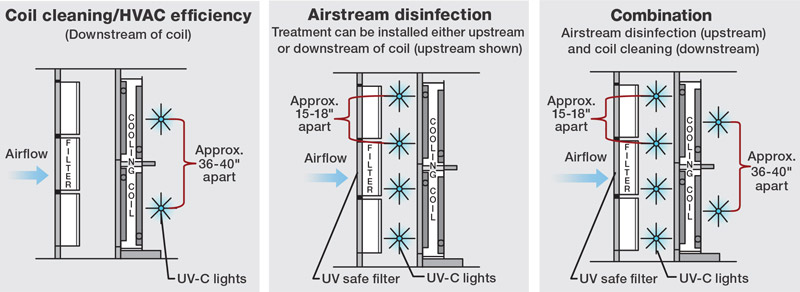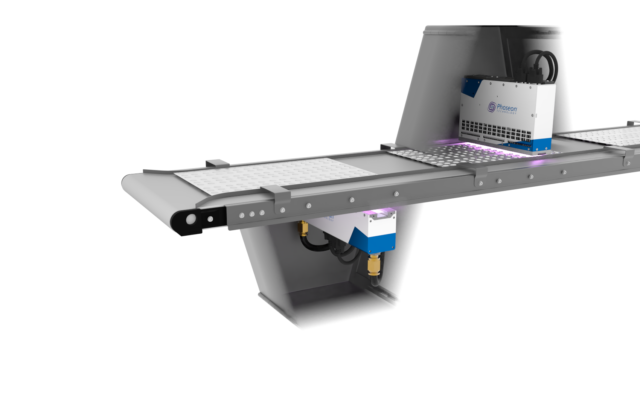UV Sanitation: The Cutting-Edge Modern Technology Changing Hygiene Practices
In the realm of hygiene techniques, one technology has emerged as a game-changer: UV sanitation. From medical care settings to food processing, UV disinfection is making its mark in numerous industries.
How UV Disinfection Works
UV disinfection works by making use of ultraviolet light to ruin or inactivate microbes, supplying a very efficient and chemical-free approach of cleanliness. This technology uses the power of short-wavelength UV-C light, which can damaging the DNA and RNA of microorganisms, therefore providing them unable to recreate and create damage.
The procedure begins with the setup of UV sanitation systems, which consist of UV lamps that emit UV-C light. These lights are tactically placed in areas where microbial contamination is a problem, such as water therapy plants, healthcare facilities, research laboratories, and food processing facilities.
When microorganisms are revealed to UV-C light, the photons permeate their cell wall surfaces and reach the DNA and RNA inside. The high-energy UV-C photons interfere with the hereditary product by developing bonds between adjacent nucleotides, causing the development of thymine dimers. These dimers prevent the bacteria from duplicating, making them harmless.
UV sanitation is very effective against a vast array of microbes, including microorganisms, parasites, and viruses. It is specifically reliable versus waterborne microorganisms like E. coli, Giardia, and Cryptosporidium. UV sanitation is a chemical-free technique, getting rid of the need for potentially harmful disinfectants and reducing the threat of harmful sanitation byproducts.
Advantages of UV Sanitation
UV disinfection provides various benefits in the area of cleanliness, making it an extremely chosen technique for successfully getting rid of hazardous bacteria. One of the crucial benefits of UV disinfection is its capacity to offer a chemical-free service. Unlike standard sanitation methods that depend on chemicals, UV sanitation makes use of ultraviolet light to damage the DNA of microbes, providing them unable to duplicate and create infections. This not only gets rid of the need for possibly damaging chemicals however additionally reduces the danger of chemical residue on surfaces.

UV disinfection is likewise very versatile in its applications. It can be utilized in different settings, consisting of hospitals, colleges, food handling centers, and water therapy plants. UV disinfection systems can be easily incorporated right into existing sanitation methods, providing an additional layer of defense against infectious illness.
Along with its performance and versatility, UV sanitation is also eco-friendly. It does not generate any type of dangerous results or residues, making it a sustainable and secure approach for cleanliness - uv surface disinfection. UV disinfection requires very little maintenance and has a long life expectancy, resulting in cost financial savings in the long run.
UV Sanitation in Health Care Setups
In medical care settings, UV sanitation has actually arised as a revolutionary method for efficiently getting rid of hazardous microorganisms. UV sanitation works by emitting ultraviolet light at a details wavelength that is deadly to germs, infections, and other microorganisms.
First of all, UV disinfection is a non-chemical technique, making it an eco-friendly choice compared to standard sanitation approaches that commonly include the usage of rough chemicals. Making use of UV light gets rid of the requirement for chemical anti-bacterials, reducing the risk of hazardous deposit or chemical exposure to both patients and medical care employees.
Furthermore, UV sanitation is extremely reliable in eliminating a variety of bacteria, consisting of drug-resistant bacteria such as MRSA and C. difficile. It supplies a trusted and constant disinfection procedure, ensuring that all surfaces and tools are thoroughly disinfected, even in hard-to-reach areas.

UV Disinfection in Food Handling
The application of UV sanitation prolongs beyond health care settings and finds significant worth in the world of food handling. uv surface disinfection. UV sanitation modern technology is ending up being significantly prominent in the food market as a result of its capability to successfully eliminate harmful virus and improve food safety
One of the major advantages of UV disinfection in food processing is its ability to target a wide variety of microorganisms, consisting of bacteria, viruses, and mold and try this out mildews. By utilizing UV light at details wavelengths, it is possible to interfere with the DNA and RNA of these virus, making them not able to replicate or create harm. This innovation can be related to numerous phases of the food handling chain, consisting of surface area sanitation, tools sterilization, and water treatment.
UV sanitation provides a chemical-free and non-thermal approach of sanitizing food. Unlike standard sanitation techniques that rely upon chemicals or warmth, UV technology does not leave any kind of residue or change the taste, texture, or dietary worth of the food. This makes it an excellent service for sectors that require strict adherence to top quality standards.
Additionally, UV browse around here sanitation systems are simple to set up and run, requiring very little maintenance. They can be incorporated into existing processing lines without creating significant interruptions to the manufacturing process. Additionally, UV systems have a fast therapy time, enabling continual processing and reducing downtime.
The Future of UV Disinfection

One area where UV sanitation is expected to make significant improvements is in the area of medical care. With the rise of antibiotic-resistant germs and the requirement for much more reliable disinfection methods, UV light has the potential to play a crucial duty in reducing healthcare-associated infections. UV disinfection systems can be made use of to sanitize surfaces, equipment, and also the air in healthcare facilities, helping to protect against the spread of unsafe pathogens and improve patient security.
An additional industry that could take advantage of advancements in UV sanitation technology is the food sector. UV light has actually currently confirmed to be a reliable method for sanitizing foodstuff and decreasing the risk of foodborne diseases. As innovation enhances, we can anticipate to see more economical and reliable UV disinfection systems being applied in food handling plants, guaranteeing that the food we take in is secure and complimentary from unsafe bacteria.
Conclusion
In verdict, UV disinfection is an advanced innovation that is changing hygiene methods in health care settings and food handling. By using UV light to kill or shut down bacteria, it uses many advantages such as security, efficiency, and performance. With ongoing advancements in this area, UV disinfection holds great prospective for the future of sanitation, supplying a sustainable and dependable solution for preserving tidy and sanitary atmospheres.
UV disinfection is a chemical-free method, removing the demand for possibly unsafe disinfectants and decreasing the threat of dangerous sanitation by-products.
Unlike standard sanitation methods that depend on chemicals, UV sanitation makes use of ultraviolet light to damage the DNA of microbes, making them unable to reproduce and cause infections. Unlike conventional sanitation methods that depend on chemicals or warm, UV modern technology does not leave any residue or alter the taste, appearance, or dietary value of the food. As innovation improves, we can expect to see extra affordable and reliable UV disinfection systems being applied in food processing plants, making sure that the food we take in is safe and free from unsafe bacteria.
In conclusion, UV sanitation is a cutting-edge innovation that is changing cleanliness techniques in healthcare setups and food handling.